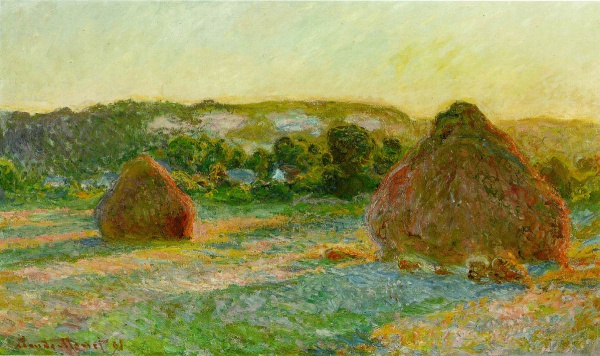Facts About Haystacks
Claude Monet's "Haystacks" series is a mesmerizing collection of Impressionist paintings, each featuring stacks of harvested wheat as its focal point. Monet began this project in 1890, producing 25 canvases that explore the effects of changing light, atmosphere, and weather. These paintings are among his most celebrated works and are housed in renowned museums such as the Musée d'Orsay, Musée Marmottan Monet, Art Institute of Chicago, Museum of Fine Arts in Boston, and the Metropolitan Museum of Art.
Monet's profound interest in the nuances of his environment in Giverny inspired him to repeatedly paint the haystacks near his home. These stacks, a common method for storing and drying grains in the 19th century, served as perfect subjects to showcase the transformation of light and mood across different seasons and times of day.
The "Haystacks" series emphasizes the ephemeral nature of light, allowing Monet to illustrate subtle variations in perception through repetition. His dedication to capturing these nuances led him to work on multiple paintings simultaneously, starting before dawn and continuing throughout the day to record various lighting conditions.
The financial success of the "Haystacks" series marked a significant milestone in Monet's career, enabling him to purchase his home in Giverny and begin constructing his famous water lily pond. This series exemplifies Monet's meticulous study of light and atmosphere and his unwavering commitment to portraying these natural elements with precision.
In addition to the 1890 series, Monet also painted haystacks during the 1888 harvest, creating three canvases that feature two stacks each, with the Seine River and Giverny houses in the background. One of the paintings from the 1890 series made history in 2019 when it sold for $110.7 million, becoming the first Impressionist work to surpass the $100 million mark.

 Mexico
Mexico